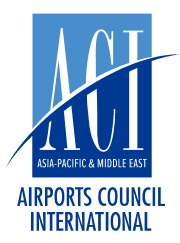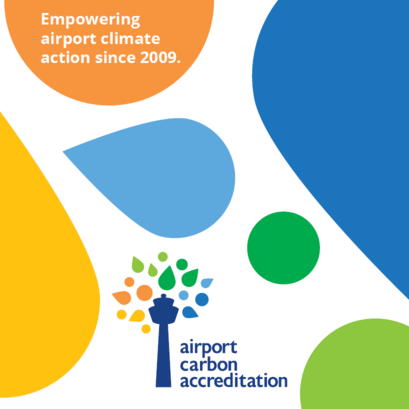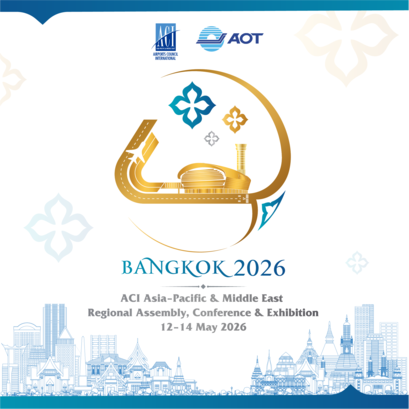
Resilience Uplift: Auckland Airport Announces Its Results for FY23 Amid Historic Upgrade of the Airport Precinct
- 2023-08-24
Auckland Airport today announced its financial results for the 12 months to 30 June 2023, including its first dividend and full underlying profit in three years.
Auckland Airport Chair Patrick Strange said: “It’s been a year marked by the strong return of international travel, with new airlines and routes, getting underway with the most significant upgrade of Auckland Airport in history, and making progress on sustainability initiatives that will have a meaningful impact across the aviation precinct.”
Key performance data for the 12 months to 30 June 2023:
- Total number of passengers increased to 15.9 million, up 183%
- Domestic passenger numbers increased 90% to 8.1 million, and international passenger numbers (including transits) increased 480% to 7.8 million
- Revenue was up 108% to $625.9 million
- Operating EBITDAFI was up 175% to $397.1 million
- Reported profit after tax was down 77% to $43.2 million
- Earnings per share was down 78% to 2.9 cents
- Net underlying profit after tax of $148.1 million
- Net underlying profit per share of 10.1 cents
- 4.0 cents per share dividend will be paid[1]
Auckland Airport now has more than 400,000sqm of aeronautical-focused infrastructure in development across major airfield, transport and terminal projects.
“This major upgrade of infrastructure is essential. Airports play a critical role in our country’s social and economic wellbeing, developing long-life infrastructure assets that support travel and trade. It’s vital we continue to invest so we don’t create a drag on the economy and constrain Auckland and New Zealand’s future growth.
“As New Zealand’s main gateway, our infrastructure programme reflects this responsibility. It is prudent investment which will deliver critical assets that will have decades of ongoing use and create the uplift in experience travellers are asking for.
“Airlines have asked us to pause investment. We appreciate their concern about cost, as infrastructure is a significant investment. We are always open to further feedback about how to reduce costs while still delivering a resilient, long-term solution.
“However, we remain committed to the current programme of work we have underway to pave the way for a new domestic terminal. Delaying infrastructure is not in New Zealand’s best interests – we know where that road leads. For the airport, it would keep domestic capacity constrained, allow the customer experience to deteriorate, place upward pressure on airfares and reduce the airport’s resilience to unacceptable levels.
“Travellers have told us they want a better domestic experience, and we must get on with it,” Mr Strange said.
Chief Executive Carrie Hurihanganui said: “The thread running through every aspect of Auckland Airport’s aviation precinct is connection. Whether that’s reuniting family and friends, welcoming visitors to Aotearoa New Zealand, or connecting businesses and workers to new opportunities, Auckland Airport plays a key role.
“Travellers and businesses can now choose from 25 airlines to 40 international destinations at Auckland Airport as airlines have added new routes or grown the frequency of their services. At a time when demand for travel has outstripped supply, each of these connections has a very real and tangible impact, providing greater choice for travellers, more competition on popular routes, and better freight connections for New Zealand businesses.”
Overall, there were 15.9 million domestic and international passengers at Auckland Airport in the 2023 financial year, up 183% on the 2022 financial year. Domestic passenger numbers were up 90% to 8.1 million while international passenger numbers (including transits) rose 480% to 7.8 million.
“Auckland Airport serves to connect travellers and businesses, and I want to acknowledge that the rapid return of aviation has not always been a smooth experience for customers. We’ve experienced storm events unlike anything before, causing the closure of the international terminal, and global aviation staffing shortages have created ongoing issues across the aviation system, including mishandled bags, longer queues and delays in the arrivals process.
“For Auckland Airport, since the beginning of the year we have been taking a lead role in working to collectively solve issues as an ecosystem of border agencies, airlines, ground handlers and other auxiliary services. There will be some quick wins and some aspects that will take longer to solve, but rest assured we will continue to work on this until we get it right.
“We have appreciated the patience and understanding of travellers and our airport partners, and I am also thankful to the Auckland Airport team for their incredible effort in supporting the recovery of the business.”
Alongside the return of travel, Auckland Airport has ramped up its infrastructure development programme.
“Attracting and retaining airline networks, which support tourism and trade, requires high quality, resilient and reliable airport infrastructure, with sufficient airfield and terminal capacity,” Ms Hurihanganui said.
“Auckland Airport needs careful, considered investment to meet these needs, not only today but in anticipation of the future.
“We have three anchor projects underway across terminals, airfield and transport: enabling works for a new domestic terminal to be integrated into the international terminal; a 250,000-square-metre airfield expansion; and the development of a world-class transport centre.
“With our 57-year-old domestic terminal now reaching capacity, development of a new domestic terminal is essential. Without continued investment, the airport system will degrade and stagnate.
When it opens in 2028/29, the new domestic terminal will deliver significant customer improvements including integrated self-service check-in, shorter queuing times with 44 per cent more capacity for passenger processing per hour, and a five-minute indoor walk between domestic and international flights.
“It will not only transform the experience for travellers; it will also build necessary resilience into our airfield with a 26 per cent uplift in domestic seat capacity thanks to additional gates catering for larger jet aircraft.
“The decision to move ahead with the new $2.2 billion integrated terminal was made after extensive consultation, including producing over 21 concept designs for a new domestic terminal since 2012.
“Airlines are asking to stay longer in the domestic terminal – well beyond 2030 – and for alternative, additional designs to be considered. After a decade of careful analysis, we are confident our infrastructure plans are in the best interests of all airport users, but we will always include refinements proposed by our airline partners where they are viable and make sense,” said Ms Hurihanganui.
Rebuilding connections
Auckland Airport has experienced a stronger than anticipated rebound in domestic and international aviation markets over the 2023 financial year.
Overall, by year’s end international seat capacity had recovered to 90% of pre-pandemic levels, and domestic recovered to 89%. The return of passenger flights also restored international freight capacity to 95% of pre-pandemic level as at 30 June 2023.
“We still have some way to go to achieving full recovery, but it all amounts to a fantastic turnaround for an industry that was in dire straits two years ago – bringing relief and optimism to those of us who work in aviation.
“Strength in North American services has been leading the charge. Air New Zealand now flies into seven North American cities including its flagship New York service, joined by Qantas on the same route from June 2023, bringing greater choice and more competitive pricing to travellers. Hawaiian Airlines, Air Canada, United Airlines and American Airlines reconnecting into Auckland will also be joined by newcomer Delta Air Lines over the summer from October this year.
“It will be a busy summer with current projections showing capacity between Auckland and North America set to exceed 2019 levels, with a forecast 29% increase over November 2023 to March 2024 compared to the same five-month period prior to COVID-19.
There has been a promising recovery in capacity to and from China as well, after a slower return due to a more protracted COVID-19 response. Five airlines now fly four routes, including daily services to some of the main centres, with capacity between China and New Zealand recovered to 78% of 2019 levels at 30 June 2023, and forecast to reach 93% of pre-pandemic levels by September.
“There was plenty of activity on the trans-Tasman route, by far our biggest international market, which is back to 96 per cent of pre-pandemic capacity. Frequent flyers Air New Zealand, Qantas and Jetstar have been joined by AirAsia X flying between Auckland and Sydney, with Batik Air starting on the Perth route tomorrow.”
Building a thriving aviation precinct
Beyond the airfield and terminals, Auckland Airport continued to progress a range of key developments across transport, retail and commercial property during the 2023 financial year.
“Later this year Te Arikinui Pullman Hotel (a joint venture between Auckland Airport and Tainui Group Holdings) will open, followed by the first stages of the Transport Hub opening up for drop-offs and pick-ups in the new year. During the 2024 calendar year we’ll be providing new parking options with the opening of Park & Ride South; and offering a new shopping experience to visitors with the opening of Mānawa Bay premium outlet shopping destination, expected in late 2024.
“These projects will bring further vibrancy and amenity to our aviation precinct, whether it’s creating smoother transport connections or great visitor experiences. As workforces grow it also becomes part of what attracts people to jobs at the airport – whether it’s easy access to local shopping or improved options for getting to and from work.”
Within the terminal, retail operations are back in full swing and the airport team is fielding strong interest in future leasing with a total of 115 outlets now operating. After hibernating during the pandemic, most have now returned to normal business operations with sites fully open.
“This year we’ve made the move to a single duty-free operator, with Lagardère AWPL-owned Aelia Duty Free agreeing to a short-term extension of its contract until mid-2025. Not only is a single operator model in line with most overseas airports, it also creates the opportunity for the introduction of additional retail lines and improved in-store experiences. In what was a seamless transition, around 90 per cent of existing duty-free employees were able to transfer to Aelia Duty Free.”
One of the fastest growing commercial areas is The Landing business park located on the northern end of Auckland Airport. In 2023, developments for Kerry Logistics and Healthcare Logistics (part of the EBOS Group) were completed, while the construction of two additional facilities remains on track for completion in the 2024 financial year. Auckland Airport has also been appointed to develop new standalone facilities within The Landing for companies which include IKEA, DHL, and Reece Group, all of which target a 5-star Green sustainability rating and will begin construction during the 2024 financial year.
The airport’s rent roll increase by 15% off the back of sustained customer demand for its high-quality, well-located real estate products. Auckland Airport’s portfolio ended the year having a total value of $2.9 billion, and occupancy levels remaining at 99% and a weighted average lease term (WALT) of 8.6 years – this is one of the highest WALTs relative to the NZ listed property sector.
Sustainability, people and community
As the upgrade of Auckland Airport continues at pace, Ms Hurihanganui said the team remained focused on its sustainability targets, with investments to progress climate change goals and create a more sustainable airport.
“We are playing our part, not just in reducing carbon emissions and waste from our own operations but also assisting the wider aviation system’s sustainability goals. It’s our investment in infrastructure that will support the deployment of new aircraft technology – whether that’s larger, more efficient domestic aircraft or future low-carbon aircraft and fuel types. We already have a range of initiatives in play to reduce fuel burn from non-flying activities, from predictive technology to manage push-back timing to ground power units available to plug in to at the gate.
“Significant progress has been made in reducing waste and carbon emissions from our own operations also. We are systematically switching off natural gas in favour of electricity in the terminals, and new developments such as the Transport Hub and Mānawa Bay will be electric only, with plans to draw a substantial portion of their power use from giant rooftop solar arrays.”
Alongside initiatives to benefit the environment, Ms Hurihanganui said Auckland Airport is also focused on bringing improvements to employees, as its workforce scales up to support a once-in-a-generation upgrade of the airport precinct. In the 2023 financial year, the airport’s team grew 24% to 579 people, with additional growth in expected infrastructure and operations-based roles during the 2024 financial year.
“It’s an exciting time to be working at Auckland Airport and we want to offer people support that makes a meaningful difference to their lives, which is why we’ve overhauled our parental leave policy,” Ms Hurihanganui said.
The airport’s new parental leave policy includes primary carer top-up payments on the Government-funded rate to 100% of salary for 18 weeks; six weeks paid leave for partners (Auckland Airport pays the two weeks which are statutorily unpaid, plus an additional four weeks); continued employer KiwiSaver contributions of three per cent to primary carers; and on the return to work, five days of family leave for primary carers to use for any reason connected with their new child.
In the 2023 financial year, Auckland Airport continued its long-standing support of community organisations in South Auckland. This included supporting the Ara Education Charitable Trust, which creates pathways into work for school leavers not going directly into tertiary education or training. Students are currently renovating houses on site at Auckland Airport to gain valuable construction work experience, while six students were able to take part in work experience at the Transport Hub during the financial year, opening them up to new career opportunities.
Pricing
After freezing prices for a year to support airlines to rebuild, Auckland Airport has now reset airline charges for Price Setting Event Four (PSE4) for the period of 2023 to 2027 financial years, with the new charges introduced on 1 July 2023.
“We consulted extensively with airlines in setting these new charges, which are the payments airlines make to operate at the airport and fund necessary infrastructure investment,” said Ms Hurihanganui.
“Our domestic charges, which have risen from a low base of $6.75 per passenger, will increase by $3.50 to $10.25 over the 2024 financial year. By 2027, they will be at a similar level to current charges at Wellington and Christchurch airports.”
The new aeronautical charges are now being independently reviewed by New Zealand’s competition regulator, the Commerce Commission.
“We welcome this scrutiny as it is an important step in ensuring airports work to benefit the traveller and make long-term decisions that are in the best interests of New Zealand’s economy. We will await the Commission’s review of our PSE4 pricing decision, which is expected in May 2024, before commenting further.”
Outlook
As Auckland Airport looks ahead to the 2024 financial year, Ms Hurihanganui said the airport continued to see positive signs in the market with increased connectivity supporting the ongoing recovery in aviation.
To reflect this, Auckland Airport is providing guidance of underlying profit after tax (excluding any fair value changes and other one-off items) of between $260 million and $280 million. In addition, with the significant investment across the airport precinct, Auckland Airport is also providing guidance on capital expenditure of between $1 billion and $1.4 billion in the year.
As always, this guidance is subject to any material adverse events, significant one-off expenses, non-cash fair value changes to property and deterioration as a result of global market conditions, or other unforeseeable circumstances.









